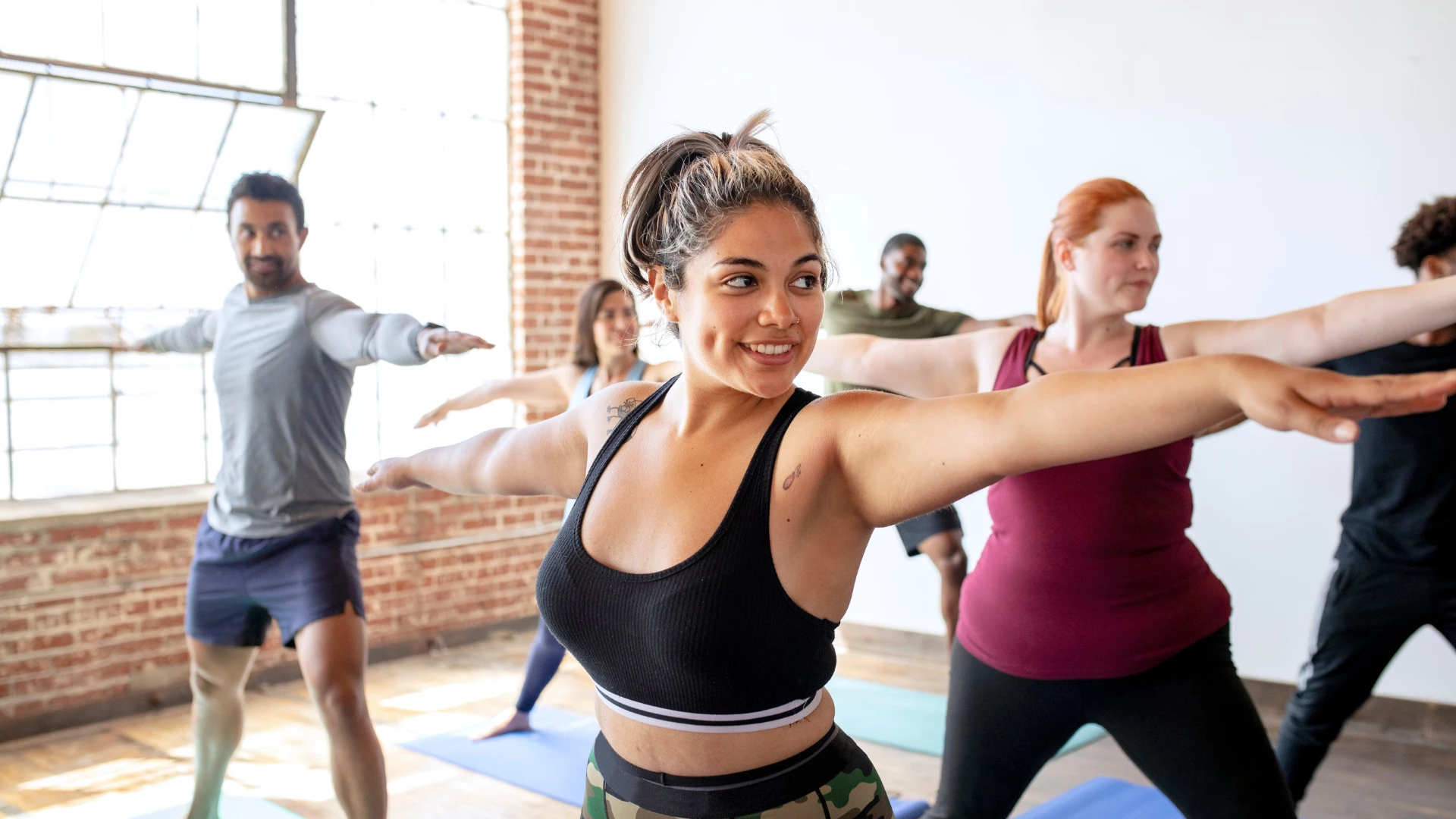Yoga and Diet: The Lowdown on Veganism, Vegetarianism, Ahimsa and Protein

Article At A Glance
Does your diet sync with your yoga practice? Is it necessary to switch to a vegetarian or vegan diet in order to practice yoga’s first yama of non-harming (ahimsa)? How much protein do we really need, and can a vegan or vegetarian diet supply those needs? This article explores these and other questions about a yoga diet.
A big question for many yoga practitioners is whether they can be vegan or vegetarian and still get the protein they need. One of the Eight Limbs of Yoga, which also applies to life, is Ahimsa or non-violence. As our yoga philosophy is a way of life rather than just something we practice on the mat, this would apply to diet choices too. It would seem the path for a yogi is a vegetarian diet, but maybe not. We must also apply ahimsa to ourselves. As Jack Kornfield says, “If your compassion doesn’t include yourself, it is incomplete.”
How Much Protein Do You Need for a Yoga Diet? 
Protein is exceedingly important for a healthy functioning body. In fact, according to Dr. Kelly Starrett and Juliet Starrett, we all need between 0.7-1 gram of protein per pound of body weight per day. For example, a person weighing 180 pounds would need between 126-180 grams of protein daily. If you are physically active or over 30, aiming for the higher end is suggested. Less active people need the lower end.
Why Yoga Bodies Need Protein
Protein is a key player in our ability to build muscle. Without it, we lose muscle mass. This becomes even more important as we age. Beginning in our 30s, we begin to lose up to 5 percent of our muscle mass per decade unless we actively work on it. Our yoga practice is important, and resistance training is even better, but it only works with the daily intake of protein.
When we are talking about protein, it’s important to understand we really mean amino acids. Protein is made up of amino acids, and our bodies need nine particular amino acids daily. These amino acids and their importance are:

- Histidine: produces histamine, which is vital in immune response, digestion, sexual function, and sleep-wake cycles. It’s also important for maintaining the myelin sheath on nerve cells.
- Isoleucine: muscle metabolism, immune function, energy regulation, and hemoglobin production.
- Leucine: critical for protein synthesis and muscle repair, contributes to regulating blood sugar levels, supports wound healing, and produces growth hormones.
- Lysine: important for protein synthesis, calcium absorption, production of collagen and elastin, hormones, enzymes and energy, and immune function.
- Methionine: important in metabolism and detoxification, tissue growth, and the absorption of zinc and selenium.
- Phenylalanine: used to create neurotransmitters such as dopamine and epinephrine.
- Threonine: an important part of collagen and elastin, skin, and fascial tissue, also plays a role in immune function and fat metabolism.
- Tryptophan: a precursor to serotonin, which is important for sleep, appetite, and mood regulation
- Valine: muscle growth and regeneration, and energy production
Yoga Diet: Vegetarian and Vegan Protein

If you choose to follow a vegan or vegetarian diet, getting all the protein you need is still possible. See the table below for some good plant-based sources of protein.
| Source | Grams Protein per 3.5 ounces (100g) serve |
| Tofu, Tempeh, Edamame | 12-20 |
| Lentils | 9 |
| Beans | 12 |
| Quinoa | 8 |
| Hemp Seeds | 27 |
Soy-based foods like tofu, tempeh, and edamame, are complete protein sources, as are quinoa and hemp seeds. Other seeds, grains, and legumes are incomplete sources. Lentils, for example, contain other amino acids but only one of the essential, Leucine. This means that a vegan or vegetarian will need to eat a variety of foods in order to get their complete protein for the day. This is not necessarily bad, as a varied diet is important above and beyond protein. However, it requires a deeper awareness of the amino acid content of vegan and vegetarian protein sources.
It’s also important to spend some time weighing portions of the foods you choose until you have a very good idea of how much protein you’re getting from your regular portions. Then you can adjust portions or food choices to ensure you get the protein your body needs for yoga and life. It brings a new level of mindfulness to your dietary choices and eating habits.
Ahimsa and Animal Protein
Most animal sources provide complete protein, which makes it much easier to fulfill our daily requirements. While getting the nutrition we need is easier, we still require mindfulness around food choices. First, it still requires getting to know how much protein a portion may contain. Spend time weighing your portions and determining if you’re getting enough or too much. See the table below for some general guidelines for some foods.
| Source | Grams Protein per 3-ounce serving |
| Chicken breast | 26 |
| Ribeye steak | 25 |
| Canned tuna | 23 |
| 2 large eggs | 13 |
The other component of mindfulness for yoga practitioners who choose animal proteins is suppliers. Try to use only ethical and humane suppliers, no caged chickens or factory farm sources. If at all possible, support local suppliers as well. This will help minimize the environmental impact of your food choices. Wild-caught fish and game animals like elk or deer may also be a kinder choice. As yoga practitioners, we practice mindfulness in all our choices, staying within our principles and ahimsa as much as possible.
Protein Supplements for a Yoga Diet
Just a quick note on protein supplements. A protein powder shake or supplement is better than nothing if you’re in a hurry or super busy. For regular protein intake, though, it’s best to eat actual food. Most foods contain so many more nutrients than just protein, so you don’t want to miss out on that all the time.
Also, read...
Related courses
Exploring the Stages of Being: The Yoga of Inner Peace
Livestream with Ellen Saltonstall: Yoga for Bone Health, Strength and Balance

Erin Bourne (RYT500, YACEP) is a yoga teacher and yoga teacher trainer based in Seventeen Seventy (yes, the real town name) in Australia. She also teaches Pilates and other movement modalities; having come to yoga from an Exercise Science and education background, she is obsessed with learning and sharing about the body and movement. Erin shares her experience and knowledge through regular classes, teacher trainings, online courses, and writing. Her course offerings include 3D Anatomy and Resistance Yoga. Her writing includes the book A Yogi’s Guide to Fascia and numerous print and online published articles. You can find Erin’s creations through her website http://www.erinlbourne.com/

